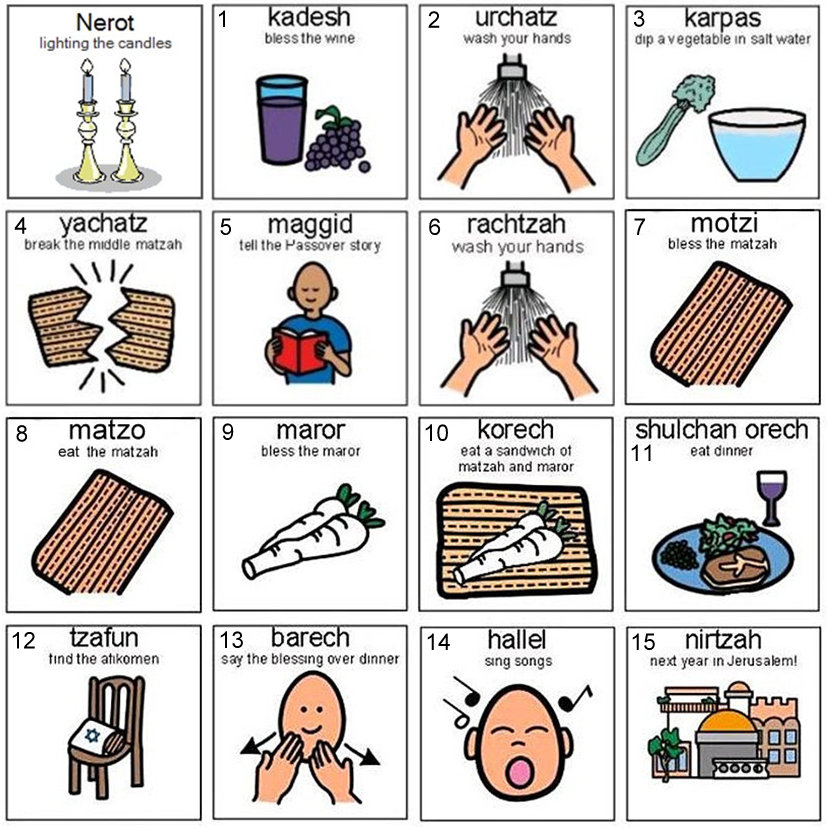A Haggadah

The “Order” of the Seder Haggadah
Lighting the Candles
1. Kadesh – The Sanctification
2. Urchatz – Cleansing the Hands
3. Karpas – Eating the Greens
4. Yachatz – Breaking the Matzah
5. Maggid – Recitation of the Service
6. Rachtzah – The Cleansing
7. Motzi – Giving Thanks for Bread
8. Matzo – Eating the Matzah
9. Maror – Tasting the Bitter Herb
10. Korech – A Reminder of the Temple
11. Shulchan Orech – The Passover Meal
12. Tzafun – Eating the Afikoman
13. Berach – Grace
14. Hallel – Praise the LORD
15. Nirtzah – The Acceptance
Chad Gadya
Use menu buttons below to access each section.
The Haggadah in Scripture
Let me use two Hebrew words associated with how Passover is celebrated, Seder (סדר) and Haggadah (ההגדה), to explain the kind of collaborative heritage that I have attempted to share. Seder means arrangement or “order” and refers to the outline of events and readings that has developed for the annual Passover celebration mandated in Leviticus. The Haggadah is the guide book participants use into which the Seder order has been assembled using both traditional and non-traditional readings.
Who wrote the Haggadah? Well, over the years it has been gathered and modified and copied from a host of sources, and its core contents can be found in books and on the Internet in a variety of forms. What you will find here will be both unique and yet familiar to many of you, kind of like a wedding celebration that has gathered something old, something new, something borrowed, and something blue…
The contemporary Haggadah for celebrating the Passover Seder included in the following pages carries forward all the traditional elements in its outline, components, instructions, and prayers. In addition, and in harmony with the tradition of keeping our Haggadah fresh and relevant, we have enhanced its timeless format with additional Scripture verses, songs, and other materials that support the underlying theme of Pesach.

